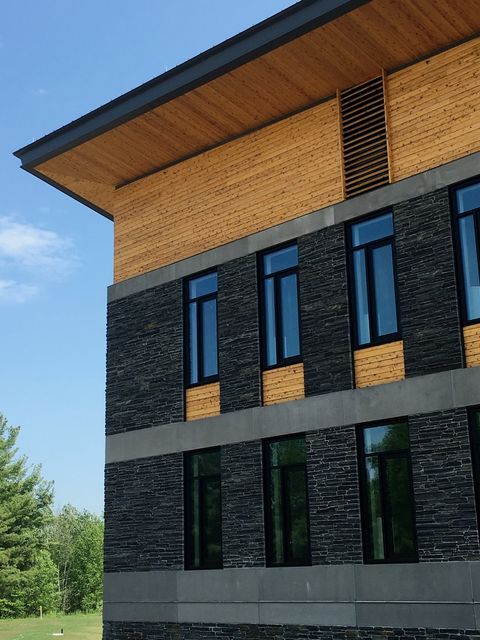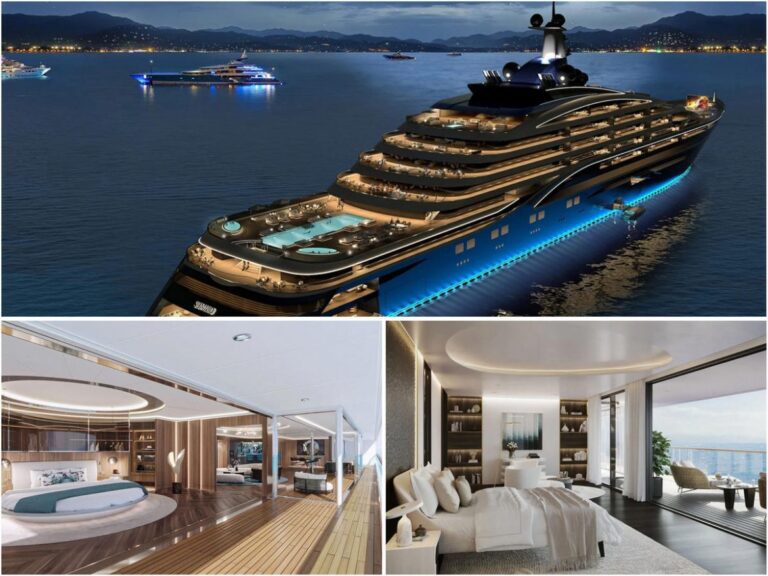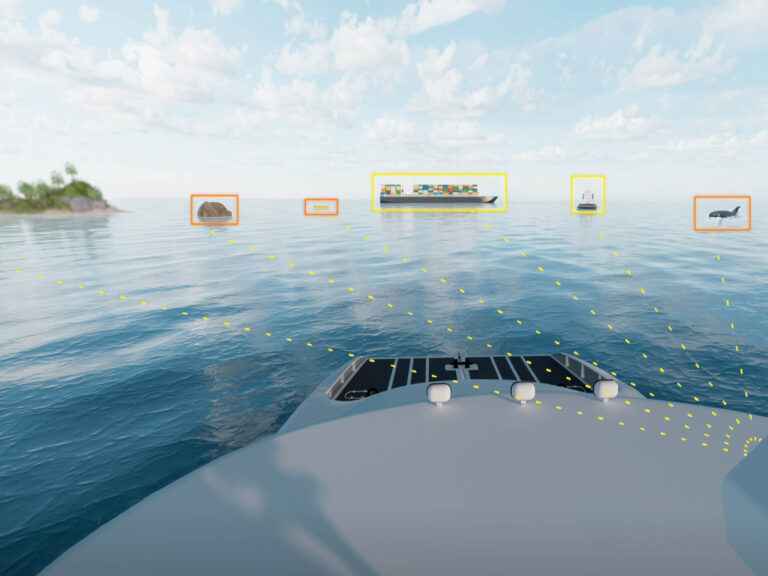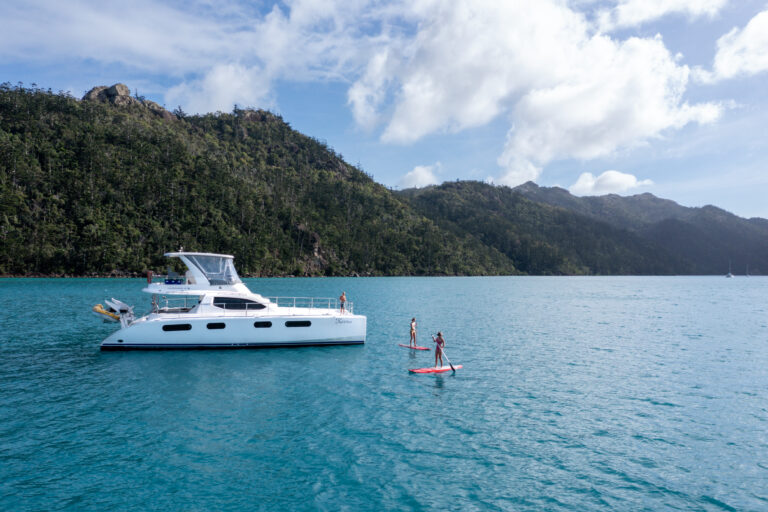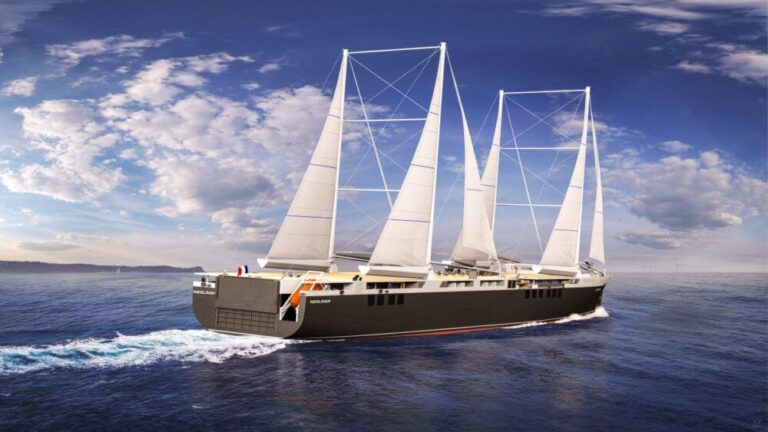The Impact of Material Choices in Boat Construction
The impact of material choices in boat construction is significant, affecting the performance, durability, and overall cost of a boat. The right materials can enhance a vessel’s speed, stability, and fuel efficiency, while the wrong ones can lead to structural issues and maintenance headaches.
Fiberglass is a popular choice for its strength and versatility, while aluminum offers lightweight and corrosion-resistant properties. Wood, although traditional, requires more upkeep but can provide a classic aesthetic. Ultimately, the material selection depends on the specific needs and preferences of the boat owner, as well as the intended use of the vessel.
Making informed choices in boat construction materials is essential for ensuring a safe, efficient, and enjoyable boating experience.
Factors To Consider When Choosing Boat Construction Materials
Choosing the right boat construction materials is crucial as it determines the overall impact on the boat. Factors such as durability, weight, cost, and maintenance should be considered to ensure optimal performance and longevity.
Boat construction materials play a crucial role in determining the overall performance, durability, and maintenance requirements of a vessel. When choosing the right material for your boat, there are several factors to consider. In this section, we will explore these factors, including strength and durability, weight and performance, corrosion resistance, maintenance and repair, as well as cost and affordability.
Strength And Durability
- Aluminum: Known for its strength-to-weight ratio, aluminum is a popular choice for boat construction. It provides excellent resistance to corrosion, making it suitable for saltwater environments.
- Fiberglass: Offering a high strength-to-weight ratio, fiberglass provides durability and is resistant to rot and corrosion. It is a versatile material that can be molded into various shapes, allowing for design flexibility.
- Wood: Traditional and aesthetically pleasing, wood offers strength and durability if properly maintained. However, it requires more upkeep compared to other materials, as wood is susceptible to rot and insect damage.
Weight And Performance
- Aluminum: Aluminum boats are lightweight, resulting in improved fuel efficiency and faster acceleration. They are easier to transport and launch, making them a popular choice for recreational boating.
- Fiberglass: Known for its lightness, fiberglass boats offer enhanced speed and performance. The material’s rigidity allows for smoother handling and improved maneuverability on the water.
- Wood: While generally heavier than aluminum and fiberglass, wood boats can still provide respectable performance. However, the added weight may affect fuel economy and handling to some extent.
Corrosion Resistance
- Aluminum: Aluminum boats exhibit exceptional corrosion resistance, especially in saltwater environments. The material forms a protective oxide layer, reducing the risk of rust and extending the boat’s lifespan.
- Fiberglass: Fiberglass is inherently resistant to corrosion and does not require additional protective coatings. However, fiberglass boats can still be affected by osmotic blistering caused by water infiltration.
- Wood: Properly sealed and maintained, wooden boats can withstand water exposure and remain corrosion-free. However, regular maintenance is required to ensure that the wood is protected from rot and decay.
Maintenance And Repair
- Aluminum: Aluminum boats require minimal maintenance, as they do not require regular painting or sealing. However, repairs can be more challenging and may require professional assistance.
- Fiberglass: Fiberglass boats are relatively easy to maintain, requiring periodic cleaning and waxing. Minor repairs, such as gel coat touch-ups or patching, can often be done by boat owners themselves.
- Wood: Wooden boats demand regular maintenance, including sealing, varnishing, and repainting to protect them from rot and UV damage. Wood rot repair can be labor-intensive and may require specialized skills.
Cost And Affordability
- Aluminum: Aluminum boats typically fall within a mid-range price point. While they may have a higher initial cost than other materials, their durability and low maintenance requirements make them cost-effective in the long run.
- Fiberglass: Fiberglass boats are available in a wide price range, from affordable options to high-end models. The overall cost depends on factors such as size, brand, and additional features.
- Wood: Wooden boat construction can vary significantly in cost. While used wooden boats can be more affordable, the price of custom-built wooden vessels or restoration projects can be higher.
By considering these factors, you can make an informed decision when choosing the right material for your boat construction, ensuring a vessel that meets your specific needs and preferences. Remember to assess the requirements of your boating activities, the environmental conditions, and the amount of maintenance you are willing to undertake.
Common Materials Used In Boat Construction
Boat construction is greatly influenced by the choice of materials used. Common materials like wood, fiberglass, aluminum, and steel have varying impacts on a boat’s performance, durability, and maintenance requirements. Careful consideration of these factors is crucial in selecting the right material for a boat’s construction needs.
Boat construction involves various material choices that directly impact the performance, durability, and overall experience on the water. Understanding the common materials used in boat construction can help enthusiasts and boat owners make informed decisions. In this section, we will explore the most widely used materials: Fiberglass, Aluminum, Wood, Steel, Carbon Fiber, and Composite Materials.
Fiberglass:
- Fiberglass is a popular material in boat construction due to its strength, versatility, and relatively affordable cost.
- It consists of woven glass fibers and a resin matrix, providing excellent resistance to corrosion and water absorption.
- Fiberglass boats are lightweight, making them fuel-efficient and easy to maneuver.
- They offer good durability, low maintenance requirements, and a smooth finish.
- However, excessive exposure to sunlight and impacts can lead to cracking or delamination.
Aluminum:
- Aluminum is favored for boat construction due to its light-weight yet robust nature.
- It offers excellent resistance to corrosion, making it suitable for both freshwater and saltwater environments.
- Aluminum boats require minimal maintenance, and their durability prolongs their lifespan.
- They are known for their fuel efficiency, higher load capacity, and ability to withstand rough conditions.
- However, aluminum boats can be more expensive than other materials, and repairs might require specialized welding expertise.
Wood:
- Traditional and aesthetically pleasing, wooden boats have a unique charm.
- Wood offers excellent strength, is easy to work with, and provides a smooth ride through the water.
- Historically, various types of wood, such as cedar, mahogany, and teak, have been used in boat construction.
- Wooden boats require regular maintenance to prevent rot, water damage, and insect infestations.
- While they offer a classic appeal, wooden boats may be susceptible to higher maintenance costs and durability issues over time.
Steel:
- Steel boats are known for their strength, durability, and resistance to impacts.
- They can withstand harsh conditions and are often used for commercial and large vessel construction.
- Steel offers excellent fire resistance, making it a safer option in certain environments.
- However, steel boats can be heavy, leading to reduced fuel efficiency and slower speeds.
- Proper rust prevention and ongoing maintenance are crucial to prolonging the lifespan of a steel boat.
Carbon Fiber:
- Carbon fiber is a high-performance material used in boat construction for its exceptional strength-to-weight ratio.
- It offers superior stiffness, making it ideal for high-speed boats and racing yachts.
- Carbon fiber boats are incredibly lightweight, providing enhanced speed, acceleration, and maneuverability.
- However, carbon fiber construction can be expensive, and repairs may require specialized knowledge and equipment.
- Carbon fiber boats also require careful handling and protection from excessive impacts or stress.
Composite Materials:
- Composite materials refer to a combination of different materials, such as fiberglass, carbon fiber, Kevlar, or wood laminates.
- Composite boats can offer a balance between strength, weight, and cost.
- They often provide improved performance, fuel efficiency, and durability compared to single-material options.
- Composite boats can be customized to meet specific needs, offering versatility in design and construction.
- However, composite materials may require skilled craftsmanship and maintenance to prevent delamination or damage to the layers.
In boat construction, the choice of material plays a crucial role in determining the vessel’s performance, durability, maintenance requirements, and overall enjoyment on the water. Understanding the characteristics and considerations of each material allows individuals to make informed decisions that align with their boating needs and preferences.
Whether it’s fiberglass, aluminum, wood, steel, carbon fiber, or composite materials, each option has its unique advantages and considerations to explore.
The Impact Of Material Choices On Boat Performance
Boat performance is heavily influenced by the material choices made during construction. The selection of materials such as fiberglass, aluminum, or wood can significantly impact a boat’s overall performance on the water.
Boat construction is a fascinating field where the choice of materials can have a significant impact on the vessel’s performance. The materials used in boat construction affect various aspects of a boat’s performance, including speed, stability, fuel efficiency, and seaworthiness.
In this blog post, we will explore how material choices influence these crucial factors and why they matter. So, let’s dive in!
Speed And Efficiency
- Lightweight materials, such as fiberglass and carbon fiber, are commonly used to construct boats aiming for high speeds. These materials offer greater strength-to-weight ratios compared to traditional materials like wood or steel.
- The reduced weight allows the boat to glide through the water more efficiently, resulting in improved speed and fuel economy.
- Smooth hulls, often made from fiberglass or aluminum, minimize drag and friction with the water, further boosting speed and efficiency.
- Advanced composite materials, like Kevlar, can also enhance a boat’s speed by providing exceptional strength and resistance to impact, enabling boats to withstand high speeds without compromising safety.
Stability And Maneuverability
- Stable and maneuverable boats are crucial for a safe and enjoyable experience on the water.
- Fiberglass and aluminum materials are commonly used to construct boats with excellent stability characteristics.
- These materials offer rigidity and strength, allowing for better control and maneuverability.
- Additionally, hull designs that distribute weight evenly and incorporate features like deep-vee or modified-vee hull designs can enhance stability and maneuverability even further.
Fuel Efficiency
- Fuel efficiency is a significant concern for boat owners, especially considering rising fuel costs and environmental considerations.
- The choice of lightweight materials, such as aluminum or composite materials, is ideal for fuel-efficient boats as they require less power to propel through the water.
- Hull design also plays a vital role in fuel efficiency. For example, boats with planing hulls that allow for faster speeds with minimal power consumption can significantly improve fuel efficiency.
Seaworthiness
- Seaworthiness refers to a boat’s ability to navigate various sea conditions with safety, comfort, and agility.
- Fiberglass is a popular material choice for achieving seaworthiness, as it offers excellent impact resistance, durability, and buoyancy.
- Boats constructed with fiberglass composite materials can withstand rough seas and handle unpredictable waves, ensuring a secure and stable ride.
- Aluminum is another material that provides exceptional seaworthiness, as it can endure harsh conditions, including saltwater exposure and impact from floating debris.
Understanding the impact of material choices on boat performance is crucial when it comes to designing or purchasing a boat. Each material has its own set of benefits and considerations, so it’s important to assess your specific needs and priorities before making a decision.
Whether you prioritize speed, stability, fuel efficiency, or seaworthiness, the right material choice can make a world of difference in your boating experience.
Environmental Considerations In Boat Construction Material Choices
Selecting the right materials for boat construction is crucial for minimizing the environmental impact. Different materials have varying levels of sustainability, durability, and recyclability, which should be considered for a more eco-friendly and responsible boat building process.
Sustainability And Renewable Resources:
- Boat construction material choices have a significant impact on the environment, and considering sustainability and renewable resources is crucial.
- Using renewable resources for boat construction helps reduce the depletion of natural resources and minimizes the overall environmental impact.
- Sustainable materials, such as responsibly sourced wood, bamboo, and plant-based composites, offer a greener alternative to traditional materials like fiberglass.
- Choosing materials that promote sustainability ensures a more eco-friendly approach to boat construction.
Recyclability:
- Another important environmental consideration in boat construction material choices is the recyclability of the materials used.
- Opting for recyclable materials ensures that the boat’s components can be reused or repurposed at the end of its lifespan, reducing waste.
- Materials like aluminum, certain plastics, and composites can be recycled, contributing to a more circular economy.
- Emphasizing recyclability means that boat manufacturers can actively contribute to reducing the environmental impact of their industry.
Environmental Impact Of Production And Disposal:
- In addition to sustainability and recyclability, evaluating the environmental impact of the production and disposal processes is crucial.
- Certain materials, such as fiberglass, can have a significant environmental impact during production and disposal stages.
- Fiberglass production involves the use of energy-intensive processes and the release of potentially harmful chemicals.
- Disposing of fiberglass boats can also be challenging, as they can release toxins into the environment.
- Exploring alternative materials with lower environmental impacts, including natural fibers, recycled plastics, and bio-based composites, can minimize the negative effects of boat construction on the environment.
By considering sustainability and renewable resources, recyclability, and the environmental impact of production and disposal, boat manufacturers can make more informed material choices that prioritize environmental responsibility. These considerations not only reduce the industry’s carbon footprint but also ensure the long-term sustainability of recreational boating without compromising performance or safety.
Case Studies: Examples Of Successful Material Choices In Boat Construction
Discover real-life examples of successful material choices in boat construction through engaging case studies. Explore the impact of different materials on the durability, performance, and overall quality of boats. Learn how the right material can make a difference in creating a reliable and efficient watercraft.
High-Performance Racing Boats
- Carbon fiber: High-performance racing boats often choose carbon fiber as the primary material due to its exceptional strength-to-weight ratio and rigidity. This material enables boats to be built lightweight while maintaining structural integrity.
- Fiberglass: Another popular choice for high-performance racing boats, fiberglass offers a good balance of strength and weight. It is also relatively affordable compared to carbon fiber.
- Kevlar: Known for its incredible tensile strength, Kevlar is sometimes utilized in high-performance racing boats to enhance durability and impact resistance.
Recreational Boats
- Aluminum: Recreational boats often opt for aluminum due to its excellent corrosion resistance and durability. It is also lightweight, making it easier to transport and launch.
- Fiberglass: A versatile choice for recreational boat construction, fiberglass provides a smooth finish and is relatively low maintenance. It also offers good strength and flexibility.
- Wood: Traditional yet timeless, wooden boats are still appreciated by many recreational boaters. Wood offers an aesthetically pleasing appearance and can be crafted into intricate designs. However, it requires regular maintenance to prevent rot and decay.
Commercial Fishing Boats
- Steel: Commercial fishing boats frequently rely on steel due to its exceptional strength and durability. This material can withstand harsh operating conditions and heavy loads.
- Aluminum: Similar to recreational boats, commercial fishing boats also opt for aluminum. It offers good resistance against corrosion caused by saltwater and is relatively lightweight.
- Fiberglass reinforced plastic (FRP): Offering a blend of strength and affordability, FRP is commonly used in the construction of commercial fishing boats. It provides good resistance against water damage and is easy to repair when necessary.
Future Trends In Boat Construction Materials
Boat construction materials are evolving to meet the demands of the future. The impact of material choices plays a crucial role in the durability, performance, and environmental sustainability of boats. From advanced composites to eco-friendly alternatives, these innovations are shaping the future of boating.
Boat construction materials have evolved significantly over the years, driven by a constant desire for enhanced performance, durability, and sustainability. As we look ahead, several exciting trends are shaping the future of boat construction.
Advanced Composite Materials:
- Carbon fiber composites: Offering impressive strength-to-weight ratio, carbon fiber composites are increasingly being used in boat construction for their excellent rigidity and impact resistance.
- Fiberglass composites: Known for their affordability and versatility, fiberglass composites remain a popular choice in boat manufacturing, providing strength, durability, and ease of maintenance.
- Hybrid composites: Combining multiple materials, such as carbon fiber, fiberglass, and Kevlar, hybrid composites offer a balance between strength, weight, and cost, making them a promising trend in boat construction.
Bio-Based Materials:
- Natural fibers: Derived from renewable sources such as flax, hemp, and jute, natural fibers are gaining traction as boat construction materials due to their eco-friendly nature, lighter weight, and excellent mechanical properties.
- Biodegradable resins: Made from plant-based sources, biodegradable resins reduce environmental impact by breaking down naturally over time. These resins can be used in combination with natural fibers to create sustainable boat components.
3D And Additive Manufacturing Processes:
- Additive manufacturing: Using 3D printing technology, boat builders can create complex components with precision, reducing material waste and production time. This innovative technique allows for customization, improved efficiency, and cost-effectiveness.
- On-demand manufacturing: With the ability to produce parts as needed, on-site or remotely, boat manufacturers can minimize inventory costs and streamline production processes. This trend holds great promise for the future of boat construction.
Nanotechnology In Material Development:
- Self-healing materials: Incorporating nanotechnology, self-healing materials have the remarkable ability to repair minor damages automatically. These materials contribute to increased durability and reduced maintenance costs.
- Improved coatings: Nanotechnology offers enhanced coatings that provide superior resistance to scratches, UV radiation, fouling, and corrosion, extending the lifespan of boat surfaces and reducing maintenance requirements.
- Lightweight nano-materials: Nanotechnology enables the development of lightweight materials with exceptional strength. These materials have the potential to revolutionize boat construction by reducing weight, increasing fuel efficiency, and improving performance.
As the boating industry continues to advance, these future trends in boat construction materials will drive innovation, leading to more efficient, eco-friendly, and durable vessels. Manufacturers and boat enthusiasts alike eagerly anticipate the exciting developments that lie ahead in this ever-evolving field.

Credit: www.theguardian.com
Frequently Asked Questions On The Impact Of Material Choices In Boat Construction
What Is A Good Material To Use To Build A Boat?
Fiberglass or aluminum are good materials to build a boat.
What Are The Main Factors That Shipbuilders Consider When Selecting Materials For Ship Construction?
Shipbuilders consider factors such as strength, durability, weight, and corrosion resistance when selecting materials for ship construction.
What Composite Material Would You Use To Make A Boat Hull And Explain Why?
To make a boat hull, a common composite material used is fiberglass due to its lightweight, durability, and resistance to corrosion.
What Are The Three Important Materials In Ship?
The three important materials in a ship are steel, aluminum, and fiberglass.
Conclusion
The choice of material in boat construction plays a significant role in its overall performance and durability. By carefully selecting the right materials, boat builders can enhance safety, efficiency, and ecological sustainability. Fiberglass is a popular option due to its strength, low maintenance requirements, and versatility.
Aluminum boats offer lightweight construction along with excellent corrosion resistance and durability. Wood, although traditional, requires extensive maintenance but adds a touch of warmth and nostalgia to boat designs. Carbon fiber, the new kid on the block, is gaining popularity for its exceptional strength-to-weight ratio.
Beyond these options, advances in material technology continue to expand the possibilities for boat construction. Ultimately, it is important for boat owners and builders to consider their specific needs, priorities, and budget when making decisions about material choices. By doing so, they can ensure a boat that meets their requirements while enjoying the pleasure of being on the water, knowing their vessel is built to last.

